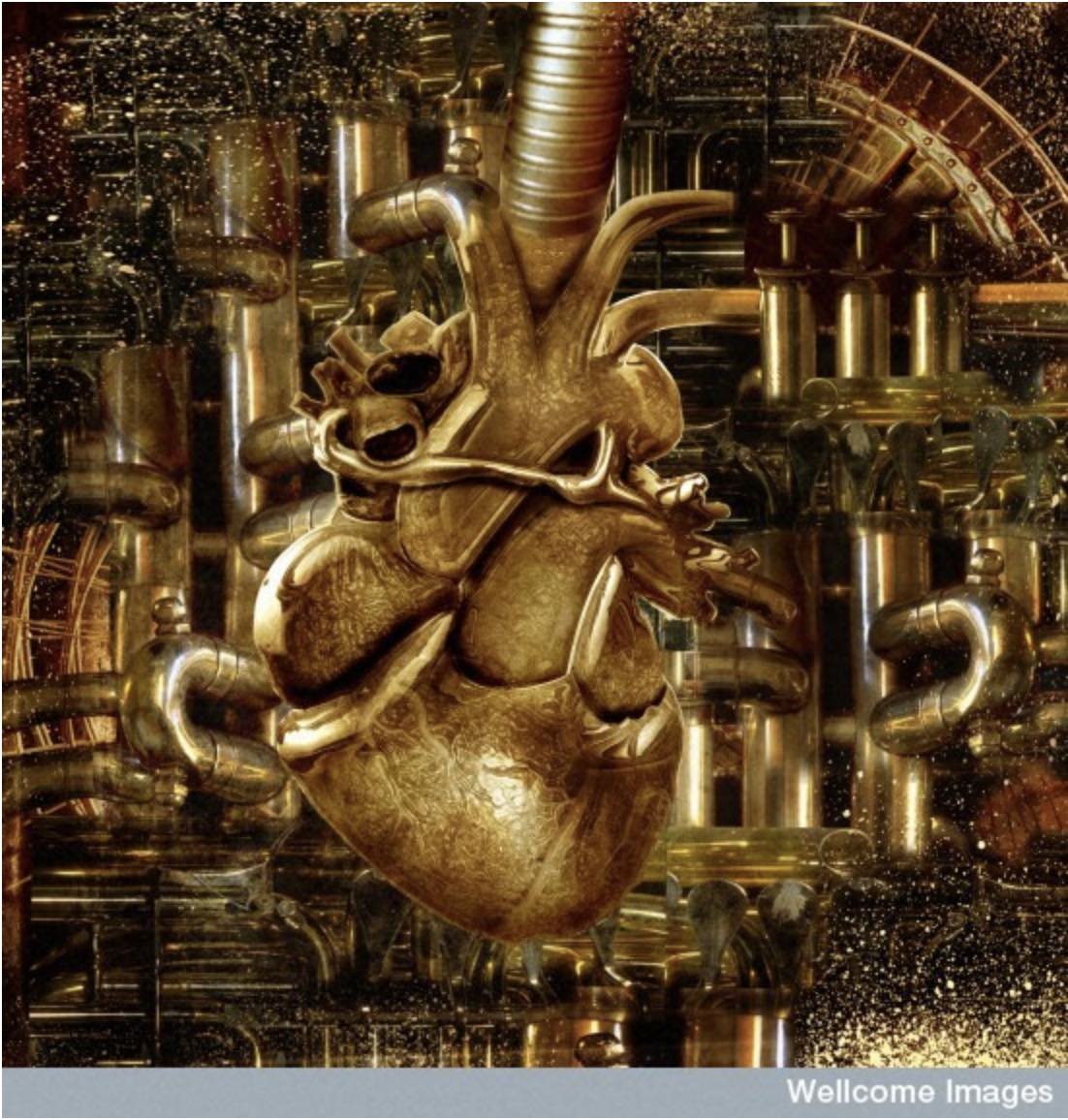Wiley Schubert Reed's Argument For The Arts

Credit: Bill McConkey, Wellcome Images
Editor’s Note: This a rereleased post from a 2016 series that aimed to introduce young, aspiring scientists to topic that sparked their curiosity. In this post, former New York City high school student Wildman S. R. explored how art drives the creation of technologies that improve people’s lives.
More than 2,500 of the world’s leading business, government, academic and cultural influencers gathered this past January in Davos, Switzerland to discuss how new and emerging technologies will revolutionize humanity. World Economic Forum (WEF) Founder Klaus Schwab describes this Fourth Industrial Revolution as “a fusion of technologies that is blurring the lines between the physical, digital, and biological spheres.” Moreover, Schwab asserts, “there has never been a time of greater promise, or greater potential peril.”
New technologies have the power to change the world for the better, but also for the worse. Gene editing technologies like CRISPR have the potential to cure genetic diseases, but also create the possibility for bio engineered eugenics (The CRISPR Quandary). As digital networks expand and intertwine, the chance for cataclysmic systems failure expands as well: a single hack or act of cyber terror could shut down the power or crash the markets of an entire country, or continent.
So how do we ensure the promise and prevent the peril? WEF co-chair, Amira Yahyaoui, calls for a “revolution of values.” “We are at a crossroads,” Yahyaoui states, “We should not just stay human; we should become better humans.”
To drive humanity towards a better future, we must look to a place that can promote empathy, compassion, and community: art.
Think of the power of music. Look at how the world united when David Bowie died a few months ago––my Facebook newsfeed is still full of emotional tributes. Adele’s ‘Hello’ has been viewed over 1 billion times on YouTube, no doubt touching millions of souls across the globe, if not more. And on a personal note, music can bring my grandfather, who’s suffering from dementia, to life like no precision medicine ever could. The late Oliver Sacks, who studied the effects of music on the human brain, makes the case perfectly: “Music can lift us out of depression or move us to tears––it is a remedy, a tonic, orange juice for the ear… It can provide access, even when no medication can, to movement, to speech, to life.”
The same could be said for the power of storytelling. J.K. Rowling and the Harry Potter series have single handedly created one of the largest communities in the world: translated into over 68 languages, it crosses almost every demographic, geographic and cultural border. And recently, I saw YouTuber Casey Neistat speak at the United Nations on the Media’s Power to Influence. Asked in 2013 to make a promotional video for the 20th Century Fox release of The Secret Life of Walter Mitty, Neistat used the entire budget to go to the Philippines following the typhoon to give food and medicines to people in need. According to Neistat, “when I sent [the marketing director] the finished video, she simply replied, ‘It made me cry.’”
Leo Tolstoy described art as evoking “in oneself a feeling one has once experienced…then, by means of movements, lines, colors, sounds, or forms expressed in words, so to transmit that feeling that others may experience the same feeling.” Music can stir our hearts, stories can make us cry, a great work of art is a window into another life. While math and science are universal connectors, bringing us together through common knowledge and shared networks, art creates empathy. It connects us in a way that numbers can’t, creating common understanding among uncommon cultures. Math shows us how life works. Art shows us life.
We know this intuitively, but there is science that backs this up. Research conducted by Dr. Keith Oatley of the University of Toronto and Dr. Raymond Mar of York University reveals that there is “substantial overlap” between the part of the brain we use to understand stories and the part of the brain we use for empathy. According to Oatley, the empathy gained from reading fiction prompts helping others: “Just as computer simulations can help us get to grips with complex problems such as flying a plane or forecasting the weather…novels, stories and dramas can help us understand the complexities of social life.”
Gene editing, artificial intelligence, big data analytics are world-altering technologies. But if the Fourth Industrial Revolution is going to truly serve us as a global community, its principal players need to understand the emotional, even spiritual, impact these technologies might have on humanity––the potential risks as well as solutions. While science and technology have the potential to make the world better, it takes art to show us what a better world can be.
Our greatest scientists understand this.
In describing the value of art, Neil DeGrasse Tyson said: “You want to live in a country where [artists] empower you to feel the world around you, to feel each other, to reach for your inner emotions…you can create a country without that, but who would live there? Not I.”
So, as scientists, technologists, engineers and mathematicians, let’s take the time to listen to music, read literature, watch film, experience art, and maybe create a little art ourselves. After all, as Albert Einstein said, “the greatest scientists are artists as well.”
